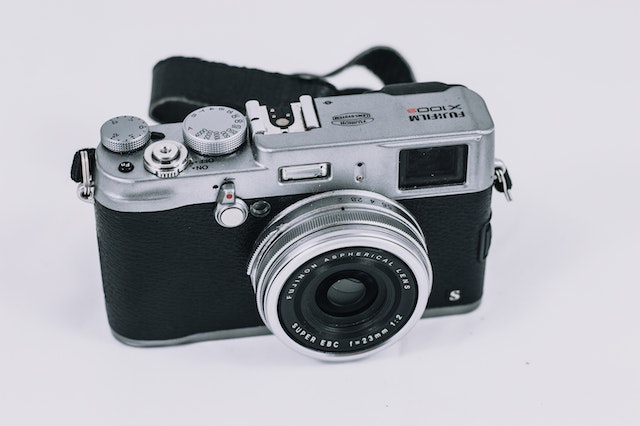
Why do cameras have mirrors? To flip the image so that we can see it the right way up through the viewfinder.
There are two types of cameras: ones with mirrors and ones without. The cameras without mirrors are digital and they don’t need to physically rotate the image because they don’t have a viewfinder. Sensors in the camera send signals to the screen in the back of the camera, displaying what it can see. This is all done digitally. Cameras with mirrors can be film cameras and they can be digital cameras, but they all have a viewfinder.
A camera works in much the same way as our eye does. In a camera, Light bounces off an object and enters the front of the camera through the lens. The lens focuses the image onto the plate, the film, or the sensors at the back. In our eye, light enters through the pupil, is focused by the lens and lands on the retina at the back. In a camera and in our eye, this image is upside down. You can see this work if you make a pinhole camera or if you use a magnifying glass to focus light from a window onto a wall. The image is always inverted. This happens because light always travels in a straight line. If you point a camera at a chair, light from the bottom of the chair and light from the top of the chair will travel in a straight line through the lens of the camera, where they cross over, before continuing a small way to make a tiny image of the chair on the back of the camera.
If you are looking through a viewfinder and you don’t have a mirror, the image you see will also be upside down. The camera uses three mirrors to get the image to be the right way up for your eye. The first mirror is in front of the plate, film, or sensor. This mirror is called a reflex mirror and is angled to reflect the image up towards the viewfinder. There is another, smaller mirror at the top of the camera that is angled to reflect the image forwards, and a third mirror that angles the image back to the viewfinder. The image reaches the eye and has been rotated to be the correct orientation.
The problem with this setup is that the mirror is in the way of the film, plate, or sensor. To take the photo, the mirror needs to be moved out of the way. In early cameras, the photographer focused the camera, then manually moved the mirror before taking the photo. That method obviously can’t work if you want to photograph anything that is moving or more than one photo in a row. This was solved by putting the mirror on a hinge and connecting it to the shutter. When the shutter button was pressed, the mirror would flip up and the photo could be taken. In early models, the mirror had to be wound back down by hand, but thus soon made way for a version that had the mirror on a spring so it automatically dropped back into place. The reason the mirror moves up when you take the photo is why the viewfinder briefly goes black and why the camera makes a “kachunk” noise when you take a photo.
Pinhole cameras have been used to project images for thousands of years, but it was only with the invention of the lens that they could be made to properly focus. These early cameras were called camera obscura. Even when focused, the image was still upside down. Mirrors were first used to rotate the image in 1676.
So, if the image in a camera is upside down just like in our eyes, how do our eyes right the image over? Light reflects off the thing we are looking at and lands on the cones in our retina. The cones translate the light wavelengths into electrical signals that are sent to the brain. However, unlike a camera that uses mirrors to right the image, our brain doesn’t see the image and then rotate it, it simply displays it the right way up for us. This is far more complex and interesting system than the camera. If you hold a camera sideways and take a picture, everything will be sideways. But, if you look at your room and then turn your head 90 degrees to the side and keep looking at the room, your brain will still register everything as the right way up. The brain couples with signals from the vestibular system in the ears to tell that the head has turned to the side, not the room. The brain compensates for this. You can see this again if you draw a square on a piece of paper. Turn that paper by 45 degrees and your square will become a diamond. However, turn your head by 45 degrees and the square will stay a square. Our brains are amazing. And this is what I learned today.
Photo by Marx Ilagan: https://www.pexels.com/photo/black-and-gray-fujifilm-camera-1091288/
Sources
https://en.wikipedia.org/wiki/Pinhole_camera
https://www.creativelive.com/photography-guides/how-does-a-camera-work
https://medium.com/hd-pro/dslr-vs-mirrorless-dee15eb5d7e
https://www.scientificamerican.com/article/right-side-up-2008-05/
https://en.wikipedia.org/wiki/Camera_obscura
